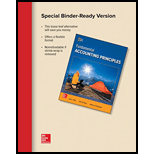
The above three ratios are important tool to measure the company ‘efficiency in earning profits and has been described as under:
Return on Investment: This suggest the percentage income earned by the company on the average amount of net assets employed in the company. The higher the ratio, better is the performance of the company.
Profit Margin: The ratio suggest that the percentage margin which the company is earning on the sales consideration.
Investment turnover ratio; The Investment turnover ratio suggest that the number of times the assets get converted in to sales. The efficiency of the company is counted on this ratio as the more number of times the assets get converted in to sales, more efficient is the company.
However, all the three ratios is integrated in the sense, that the Return on investment is a product of Margin and assets turnover ratio.
Requirement1&2:
To Determine: The Return on Investment and profit margin ratio of the company shall be determined.
Requirement3&4:
To determine: The revised ROI and Assets turnover ratio shall be computed.
Want to see the full answer?
Check out a sample textbook solution
Chapter 24 Solutions
Loose Leaf for Fundamental Accounting Principles
- A company reports total liabilities of $3,500 and stockholders' equity of $2,400. What is the amount of total assets?arrow_forwardI am looking for the correct answer to this general accounting problem using valid accounting standards.arrow_forwardCan you help me find the accurate solution to this financial accounting problem using valid principles?arrow_forward
- A company reports the following figures for the • Net income: $280,000 . Preferred dividends: $30,000 year: • • Average total stockholders' equity: $2,100,000 Average common stockholders' equity: $1,300,000 (a) The return on stockholders' equity, and (b) The return on common stockholders' equity. (Round your answers to one decimal place.)arrow_forwardI don't need ai answer general accounting questionarrow_forwardSoza earns $1,850 per pay period. Compute the FICA taxes for both employee and employer share. What is the total of the employee- and employer-share FICA tax liabilities for Soza's pay per pay period? Note: Assume that Soza has not met the Social Security wage base.arrow_forward
- I need help solving this financial accounting question with the proper methodology.arrow_forwardGeneral accountingarrow_forwardA company reported an increase in net sales from $5.2 billion in 2021 to $5.8 billion in 2022. During the same period, its gross profit rose from $1.6 billion in 2021 to $1.9 billion in 2022. Calculate the gross profit percentage for each year.arrow_forward

 AccountingAccountingISBN:9781337272094Author:WARREN, Carl S., Reeve, James M., Duchac, Jonathan E.Publisher:Cengage Learning,
AccountingAccountingISBN:9781337272094Author:WARREN, Carl S., Reeve, James M., Duchac, Jonathan E.Publisher:Cengage Learning, Accounting Information SystemsAccountingISBN:9781337619202Author:Hall, James A.Publisher:Cengage Learning,
Accounting Information SystemsAccountingISBN:9781337619202Author:Hall, James A.Publisher:Cengage Learning, Horngren's Cost Accounting: A Managerial Emphasis...AccountingISBN:9780134475585Author:Srikant M. Datar, Madhav V. RajanPublisher:PEARSON
Horngren's Cost Accounting: A Managerial Emphasis...AccountingISBN:9780134475585Author:Srikant M. Datar, Madhav V. RajanPublisher:PEARSON Intermediate AccountingAccountingISBN:9781259722660Author:J. David Spiceland, Mark W. Nelson, Wayne M ThomasPublisher:McGraw-Hill Education
Intermediate AccountingAccountingISBN:9781259722660Author:J. David Spiceland, Mark W. Nelson, Wayne M ThomasPublisher:McGraw-Hill Education Financial and Managerial AccountingAccountingISBN:9781259726705Author:John J Wild, Ken W. Shaw, Barbara Chiappetta Fundamental Accounting PrinciplesPublisher:McGraw-Hill Education
Financial and Managerial AccountingAccountingISBN:9781259726705Author:John J Wild, Ken W. Shaw, Barbara Chiappetta Fundamental Accounting PrinciplesPublisher:McGraw-Hill Education





